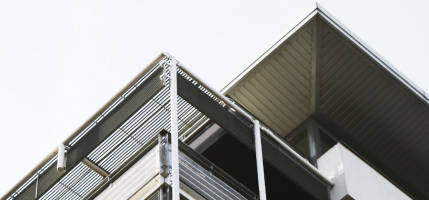IMO 2020 introduced a 0.5% Sulphur cap on bunkers to ships operating outside Emission Control Areas.
A year on, the shipping industry has adapted through introduction of time charter contractual clauses spreading risk between shipowners and charterers, and has complied through increased use of Very Low Sulphur Fuel Oil (VLSFO).
This is the first article in our dedicated series on regulation designed to limit the impact of shipping on the environment. It explores the effect of the introduction of the 0.5% m/m Sulphur cap (mass by mass) on bunkers through the IMO 2020 regulations, and assesses the industry’s response during 2020. Our next article looks at the shipping industry’s attempt to regulate Green House Gases (decarbonisation).
Background
The International Maritime Organization (IMO) is the UN branch bearing responsibility for the safety and security of shipping and the prevention of marine and atmospheric pollution by ships. It consists of 174 Member States, and features 50 Conventions and Protocols. Amongst these Conventions is the International Convention for the Prevention of Pollution from Ships (MARPOL). Annex VI of MARPOL, which was adopted in 1997 and came into force in 2005, addresses air pollution from ships seeking to regulate airborne emissions such as Sulphur oxides (SOx), nitrogen oxides (NOx), ozone depleting substances (ODS), volatile organic compounds (VOC) and shipboard incineration. A revised Annex VI with tighter requirements was adopted in 2008 entering force in 2010, and since then further amendments have been adopted.
Prior to IMO 2020 the main type of bunker used in shipping was heavy (High Sulphur) Fuel Oil (HSFO), derived from crude oil distillation. Crude oil contains Sulphur, and combustion results in SOx which cause respiratory symptoms and lung disease. Furthermore, SOx contributes to acid rain which may harm crops, forests and aquatic organisms, and adds to acidification of the oceans. To put things into perspective, it has been estimated that although ships account for 7% of the fuel oil used in the transportation sector, it generates 90% of its Sulphur emissions.
IMO 2020 Regulations & Solutions
Until 31 December 2019, ships operating outside Emission Control Areas (the Baltic; the North Sea; the North American Sea; and the United States Caribbean Sea) had to abide by a 3.5% Sulphur cap in their bunkers. The IMO 2020 Regulations, and more specifically Regulation 14.1.3 of MARPOL Annex VI imposed a 0.5% Sulphur cap on all ships regardless of size, which fly the flag of a Member State which has ratified Annex VI and/or transit through the territorial waters of/call at those Member States which have ratified Annex VI. In addition, Annex VI prohibits the carriage of HSFO exceeding 0.5% Sulphur for use in fuel tanks (not as cargo) as of 1 March 2020, unless ships are fitted with scrubbers (exhaust gas cleaning systems) which are operational (Carriage Ban). Within Emission Control Areas an even tighter cap of 0.1% Sulphur exists. Any sanctions for non-compliance are left to individual Member States under Regulation 11, and enforcement principally falls under Port State Control, as the IMO does not set fines or sanctions.
To abide by the 0.5% Sulphur cap, shipowners/charterers broadly can resort to three different solutions: (i) use Very Low-Sulphur compliant Fuel Oil (VLSFO) (ii) use alternative fuel such as liquefied natural gas (LNG), methanol, liquefied petroleum gas (LPG), hydrogen fuel cells, or biofuels which emit reduced or negligible SOx, and (iii) use equivalent methods, the most common of which includes fitting (or retro-fitting) their ships with scrubbers. Scrubbers broadly fall into two categories, open loop and closed loop. Open loop scrubbers add water to the exhaust gas turning SOx to sulphate/sulphuric acid, discharging washwater whose PH should be no less than 6.5. Closed loop scrubbers operate in a closed circuit, and any residues should be discharged ashore to adequate reception facilities.
Liability – Contractual Clauses
Liability for compliance with MARPOL Annex VI principally rests with shipowners. Charterparties usually contain provisions whereby shipowners warrant that a vessel shall comply with International rules and regulations. This is commonly the case in voyage charters, where shipowners usually supply the fuel which factors into the freight rate (for example through a bunker adjustment factor).
In time charters, by contrast, allocation of risk between the parties is feasible. As it is charterers who usually purchase and provide the fuel whilst the ship is on hire, clearly drafted contractual provisions may shift liability onto charterers, failing which shipowners may need to rely on implied terms, depending on the specific charterparty provisions. Liability however will not pass where the ship is unfit or incapable of consuming compliant fuel.
An example of such clearly drafted clauses features in BIMCO’s Marine Fuel Sulphur Content Clause for Time Charter Parties, whereby under subclause (b) ‘The Charterers shall supply fuels to permit the Vessel, at all times, to comply with any applicable Sulphur Content Requirements’ and ‘The Charterers shall indemnify, protect, defend and hold harmless the Owners from any and against all losses, damages, liabilities, delays, deviations, claims, fines, costs, expenses, actions, proceedings, suits, demands arising out of the Charterers’ failure to comply with this subclause (b), and the Vessel shall remain on hire throughout’. INTERTANKO’s Bunker Compliance Clause is even more specific, and under subclause 1.1 Charterers warrant that they will supply bunkers of sufficient quantity and quality to enable the Vessel to ‘comply with the global limits on sulphur content of bunkers under Regulation 14.1 of MARPOL Annex VI (as amended from time to time) (‘MARPOL Annex VI’), including the maximum 0.50% m/m for bunkers used on board after 1 January 2020 (‘0.50% Sulphur Cap’).
Compliance
Combined data reveal that, despite fears to the contrary, compliance with the IMO 2020 regulations was adequate throughout 2020. The Maritime Port Authority of Singapore reported that 96% of all ships calling at Singapore in the first quarter of 2020 used compliant fuel, with just 12 ships exceeding the Sulphur cap, likely due to HSFO residue in the tanks, and piping. Singapore derived figures further reveal 70% of bunker fuel sold over the first 6 months of 2020 was VLSFO, 11% was Marine Gas Oil (MGO), and 18% was HSFO. Meanwhile, Veritas Petroleum Services and VPS, companies which provide bunker testing, reported similar figures at the ARACON conference, with 2/3 of bunkers throughout 2020 consisting of VLSFO, with HSFO at 20%, and MGO (which consists of a lighter distillate with low Sulphur) accounting for 12%. Veritas further reported that 84% of VLSFO and 93% of MGO met specifications, and VPS found a gradual increase in HSFO throughout the year, owing to more ships deploying scrubbers.
While 2020 figures reveal VLSFO is the bunker of choice when compared to HSFO and MGO, its wide use also indirectly suggests it is winning the overall battle when compared to scrubbers. Clarkson’s reported 700 retrofits of scrubbers could now be delayed or cancelled altogether. It is suggested this has resulted from the narrow VLSFO/HSFO price spread which currently stands at $50/t, half of the $100/t figure employed by scrubber manufacturers to argue for economic viability, with the payback period now pushed from 1-2 years to 4-6 years. The HSFO price has held up owing to increased demand by US refiners as a feedstock, while the VLSFO price has come under attack owing to increased supply, firstly due to abundance of vacuum gas oil (VGO) diverted away from a COVID-19 stricken motor industry under frequent lockdowns and used in blending, and secondly due to a VAT rebate and a consumption tax waiver by the Chinese government. Moreover, there are concerns over delay in scrubber installations brought about by COVID-19, and over increasing bans by several ports and countries on the washwater from open-loop scrubbers.
Conclusions - Recommendations
IMO 2020 regulations brought the radical reduction of the limit of Sulphur in bunkers from 3.5% to 0.5%. Shipowners/charterers were left with three solutions, namely using VLSFO, HSFO combined with scrubbers, and alternative fuel such as LNG and methanol. With liability for compliance for the 0.5% Sulphur cap resting mainly on shipowners, industry contractual clauses were developed to spread the associated risk between shipowners and charterers in time charters. Shipowners are advised to incorporate such clauses on new charters, and renegotiate their inclusion on existing charters, failing which they may need to resort to implied terms within them.
A year on, widely reported figures suggest compliance of the shipping industry with the IMO 2020 regulations has been adequate, while VLSFO seems to currently emerge as the preferred solution due to a narrow VLSFO/HSFO price spread, and due to concerns over COVID-19 associated delays in scrubber installations, and increased bans on open-loop scrubber washwater by several ports and countries. Both shipowners/charterers should however be mindful of monitoring the VLSFO/HSFO price spread and how it develops over COVID-19 and other geopolitical events, to adequately plan their long-term IMO 2020 strategy.
For more information please visit our website microsite on Shipping or contact Mr. Ioannis Generalis at This email address is being protected from spambots. You need JavaScript enabled to view it.
Back to News


